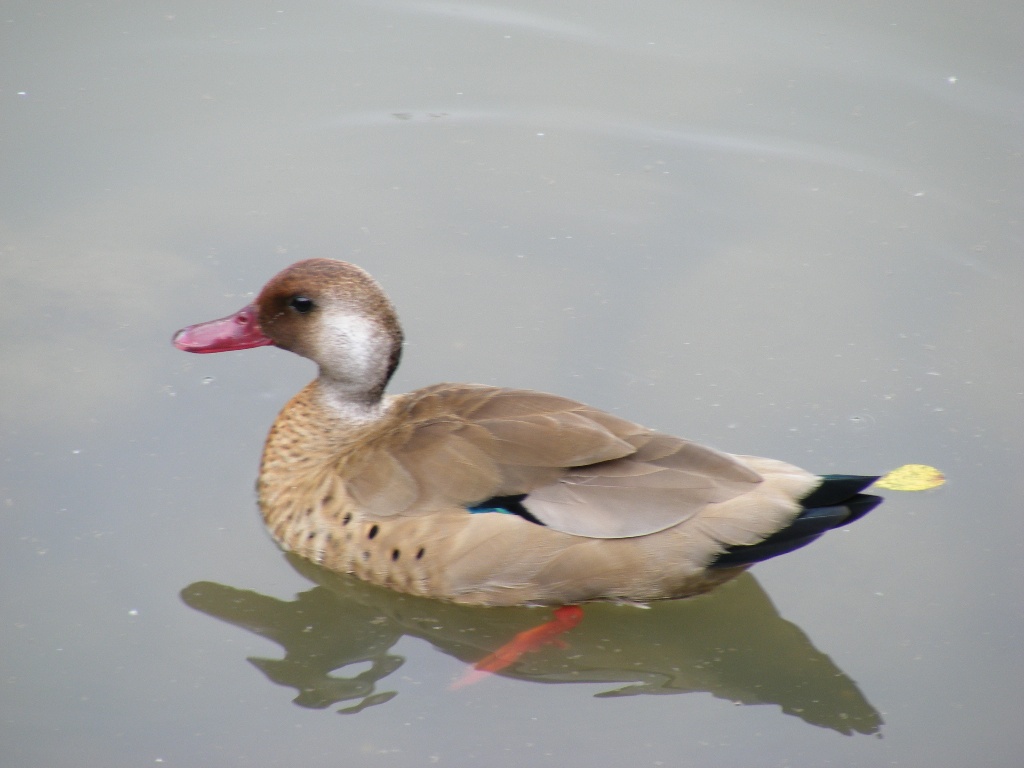
Brazilian teal, or Brazilian duck(Amazonetta brasiliensis)
Phylum —chordata
Class — aves
Order — anseriformes
Family — anatidae
Genus –amazonetta
Appearance
This is a small duck 40 cm long and weighing 600 g. The ducks are light brown in color. Drakes distinguish themselves from females in having red beaks and legs, and in having a distinctive pale grey area on the side of its head and neck. The color of these limbs is much duller in females.
Habitat
They can be found throughout eastern South America, from Uruguay, to northern and eastern Argentina, Paraguay, central Venezuela, Brazil, northeastern Peru, Suriname, Guyana, French Guiana, eastern Bolivia, and eastern Colombia.
Behavior
They live in pairs or small groups of up to twenty birds. They feed in shallow water near the shore. They often sit on the branches of trees located near the water. They fly fast but low.
Diet
They eat seeds, fruits, roots and insect, while ducklings eat only insects.
Reproduction
The nest is built either by hiding in dense vegetation right on the ground near water, or on water on floating plants, or even in rocks. Sometimes, old abandoned nests of other species are used for nesting. In a clutch of Brazilian teal there are 6-12 eggs. Chicks are hatched onthe 25th day. Both parents take care of their chicks.
In captivity
Lifespan in captivity is up to 30 years.
It is not difficult to keep Brazilian teals. In summer, ducks are kept in outdoor enclosures. The minimum size of the enclosure is 4 square meters: one meter for a bird.
In winter, they should be transferred to an insulated enclosure with a temperature of at least +5 °C. The minimum size of a winter enclosure is 2 square meters.It is desirable to equip the enclosure with additives in the form of branches and perches. In the winter room, you must install a pool with running or frequently replaced water. In areas with mild winters, teals can be kept in outdoor enclosures.
In this case, all winter it is necessary to maintain a sufficient mirror of the reservoir for birds, not covered with ice. This is achieved in various ways, one of which may be the use of an air compressor. Long hoses from the compressor that pumps air are lowered to the bottom of the reservoir, and air bubbles, rising up, carry warmer water. With constant mixing of warm water from the lower layers of the reservoir with colder water from the surface, the possibility of ice formation is eliminated even in the most severe frosts.
As a winter bedding for waterfowl, you can use soft hay, which is laid out in places where birds rest.
The diet includes grain feed-corn, wheat, barley, millet, oatmeal, wheat bran, grass, meat and fish meal, chalk, small shell, gammarus. In the warm season, it is good to give various greens - cut dandelion leaves, lettuce, plantain, duckweed. Good food for ducks - wet mixture of grated carrots, bran, various cereals. During the reproductive period and during molting, they are mixed with wet food or given separately: fish and minced meat.During working out a diet it should be calculated that the amount of raw protein does not exceed 18-19%.
Brazilian tealsare friendly to other birds, so they can be kept in the same pond with other ducks.
Artificial shelters for nests are installed in the paddock. Ducks independently incubate, breed and raise ducklings.
 Russian
Russian
 English
English























